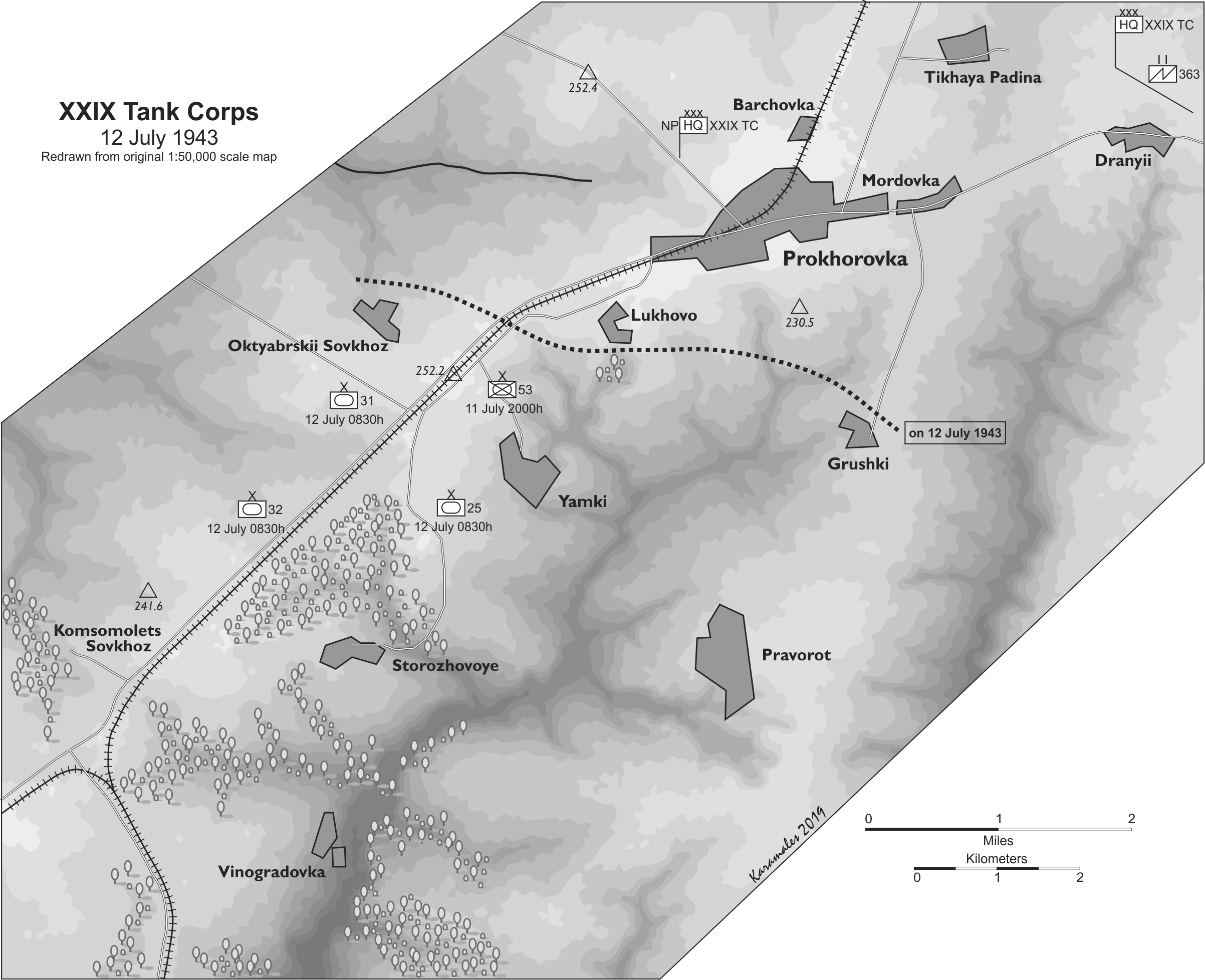This is the follow-up post to “Morning Reports LSSAH”: Morning Reports LSSAH – 12 July 1943 | Mystics & Statistics (dupuyinstitute.org)
The original plan on 12 July was for the Fifth Guards Tank Army to launch it attacks from in front of Prokhorovka at 1000 AM (Moscow time). At the last minute, the Voronezh Front command moved the time up of the attack to 0830. Both the Fifth Guards Tank Army and the Fifth Guards Army stated that they attacked at 0830. The Fifth Guards Army was to the northwest of the Fifth Guards Tank Army and was engaged with Totenkopf SS Division in addition to other German units. The Fifth Guards Tank Army was primarily engaged with the Adolf Hitler SS Division (LSSAH), although it was partly engaged with its neighbor on the left, Totenkopf, and its neighbor on the right, the Das Reich SS Division.
Berlin time is one hour ahead of Moscow time, so a 0830 attack (Moscow time) occurred at 0730 (Berlin time). Added to that, the times listed are the times the reports were sent or filed, not when they occurred. In some cases, they report the time the event occurred. So for example, at 0740 Totenkopf reports an event at 0630 and another event at 0705. The same occurs at 0822 (event was at 0745), at 0825 (event was at 0740), at 0955 (event was at 0930), and so on.
So at 0500 (Berlin time) they report hearing “tank noises.”
At 0600 they received a regimental strength attack along the line of Prochorowka-Petrowka. See map below.

I have no idea what generated this report. This attack is at least a hour-and half before the Soviets claim they attacked. If could be a small recon in force not otherwise reported, a false report and a confused time.
At 0630 Totenkopf is being infiltrated and fired on (at 0630 or 0740?) and under a very heavy infantry attack at 0705. Again the 0630 and 0705 Berlin times do not match with the Fifth Guards Army 0830 Moscow time start time.
At 0822 Totenkopf, which can see most of the XVIII Tank Corps attack positions, reports “two enemy regiments and about 40 tanks from the northeast, observed entering Michailowka and hills to the southeast at 0745.” This is clearly the XVIII Tank Corps attack. The report almost perfectly matches with a 0830 Moscow time. Assuming it takes a few minutes from when the orders are given to everything gets moving, spotting this movement at 0745 Berlin time pretty much confirms that the XVIII Tank Corps attack started at 0830 Moscow time. Rotmistrov was at his command post at height 252.4 (it is on the map on the road between Prokhorovka and Voroshilov Sovkhoz). Marshal Vasilevkii, the Stavka representative, was there with him. The XXIX Tank Corps was supposed to start its attack at the same time. From height 252.4, Rotmistrov could see most of the XXIX Tank Corps and parts of the XVIII Tank Corps. So, I am guessing that the XXIX Tank Corps attack also started at 0830.
Just for reference, the Germans held height 252.2 and Oktyabrskii Sovkhoz opposite the XXIX Tank Corps.

Now, I gather one could put together an argument of a later attack by the XXIX Tank Corps from the 1000 hours report from LSSAH that says “Enemy attacks on all fronts (At 0915 hours, 40 tanks from Jamki against Swch. Stalinsk, 35 tanks from Prochorowka along the road to the southwest, 40 tanks from Petrowka against Swch. Iktjabrskiy, and the heaviest artillery support. But… I don’t think this report really does indicate that the XXIX Tank Corps attack started at 1000 Moscow time.
Anyhow, I still don’t see a strong reason to overrule multiple reports by both the Fifth Guards Tank Army and the Fifth Guards Army that they initiated the attack at 0830 Moscow time. It does seem that these German records report spotting the XVIII Tank Corps attack at 0745 Berlin time, which would be 15 minutes after the Soviets said they attacked.
